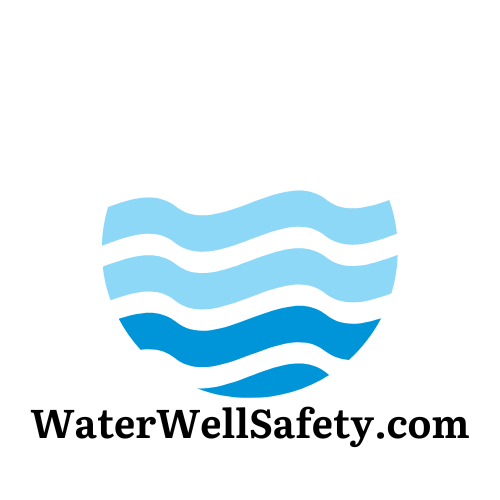The Importance of Regular Water Well Inspections in Oklahoma
For Oklahoma homeowners and municipalities relying on water wells, regular inspections are the cornerstone of ensuring safe, reliable, and compliant water systems. Without annual checkups, wells can develop issues like contamination, structural damage, or equipment failure, leading to health risks and costly repairs—sometimes exceeding $5,000 for pump replacements or $10,000 for redrilling. Oklahoma’s unique environmental challenges, including seismic activity, aquifer depletion, and extreme weather, make inspections even more critical. At WaterWellSafety.com, we offer expert Hazard Analysis, Water Sampling Consultation, and WellCare Plans to keep your well in top condition. In this guide, we’ll explain why regular inspections are essential, what they involve, and how our services help protect your Oklahoma well.
Why Inspections Matter in Oklahoma
Oklahoma’s wells face distinct risks due to the state’s geology, climate, and industrial activity. The Oklahoma Geological Survey reported over 900 earthquakes in 2024, many linked to oil and gas operations, which can crack well casings and allow contaminants to enter. Agricultural runoff in regions like the Ogallala Aquifer increases nitrate and bacterial risks, while droughts strain pumps and reduce water yield. Regular inspections catch these issues early, ensuring compliance with OWRB and DEQ regulations, preventing health hazards, and avoiding expensive repairs. Here’s why annual inspections are non-negotiable and what they entail.
1. Detecting Structural Damage
Why It’s Critical: Well casings, caps, and seals can crack due to Oklahoma’s seismic activity or settle over time, allowing surface water, bacteria, or chemicals to infiltrate. The OWRB requires wells to maintain watertight seals and proper setbacks (e.g., 100 feet from septic systems).
What Inspections Check:
Integrity of casings, caps, and grout for cracks or leaks.
Compliance with OWRB construction standards (e.g., steel or PVC casings, bentonite seals).
Signs of erosion or flooding near the wellhead.
Our Solution: Our Hazard Analysis thoroughly assesses your well’s structure, identifying risks like seismic damage and ensuring OWRB compliance.
2. Ensuring Water Quality
Why It’s Critical: Contaminants like nitrates, bacteria (e.g., E. coli), or oilfield chemicals (e.g., benzene in the Anadarko Basin) can make water unsafe. The DEQ recommends annual testing to meet drinking water standards (e.g., nitrates below 10 mg/L).
What Inspections Check:
Water samples for bacteria, nitrates, VOCs, and heavy metals.
Functionality of treatment systems (e.g., reverse osmosis, UV disinfection).
Evidence of surface contamination from flooding or nearby activities.
Our Solution: Our Water Sampling Consultation provides professional testing and DEQ-compliant reports to ensure your water is safe.
3. Maintaining Equipment Performance
Why It’s Critical: Pumps and pressure tanks are prone to wear, especially during Oklahoma’s droughts, which strain systems and reduce water flow. A failed pump can cost $1,500–$5,000 to replace, and neglected maintenance shortens equipment lifespan.
What Inspections Check:
Pump performance (e.g., pressure, cycling frequency).
Pressure tank condition for leaks or corrosion.
Electrical components for wear or power surge damage.
Our Solution: Our WellCare Plans include regular equipment maintenance to prevent failures and extend system life.
4. Preventing Costly Repairs
Why It’s Critical: Catching issues early through inspections avoids major expenses. For example, repairing a cracked casing costs $500–$2,000, while redrilling a failed well can exceed $10,000. Regular checks also ensure compliance, avoiding OWRB fines (e.g., $500–$5,000 for non-compliant wells).
What Inspections Check:
Early signs of wear, corrosion, or contamination risks.
Compliance with OWRB and DEQ standards to avoid penalties.
Records for property sales, as compliant wells boost value by 5–10%.
Our Solution: Enroll in our WellCare Plans (Essential, Professional, Enterprise) for scheduled inspections that save money long-term.
5. Supporting Compliance and Property Value
Why It’s Critical: Regular inspections provide documentation for OWRB and DEQ audits and enhance property value for homeowners planning to sell. A certified, compliant well reassures buyers and municipalities, reducing liability and speeding up sales.
What Inspections Check:
Adherence to OWRB construction and DEQ water quality standards.
Maintenance records for regulatory or real estate purposes.
Eligibility for WaterQuality Assured certification, a mark of elite safety.
Our Solution: Our WaterQuality Assured Program certifies your well, adding a trusted seal that boosts property appeal.
How WaterWellSafety.com Helps
At WaterWellSafety.com, we understand Oklahoma’s well challenges, from seismic risks to aquifer depletion. Our services make inspections easy and effective:
Hazard Analysis: Identifies structural and environmental risks, ensuring OWRB compliance.
Water Sampling Consultation: Tests for contaminants to meet DEQ standards.
WellCare Plans: Offers ongoing inspections and maintenance.
WaterQuality Assured Program: Certifies your well meets elite standards, enhancing value and trust.
Regular inspections through our services protect your health, wallet, and property, ensuring your well remains a reliable asset.
Take Action Today:
Schedule a Free Consultation: Discuss your well’s inspection needs with our Oklahoma experts.
Book a Hazard Analysis: Ensure your well is safe and compliant with a professional assessment.
Download Our Free Risk Management Handbook: Get expert tips on well maintenance and compliance.
